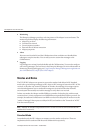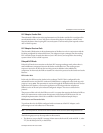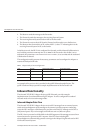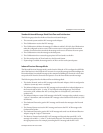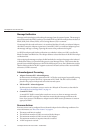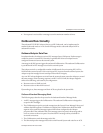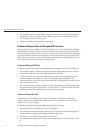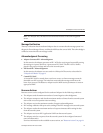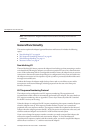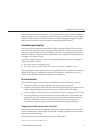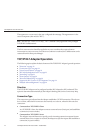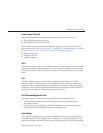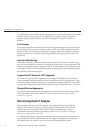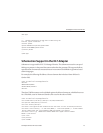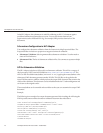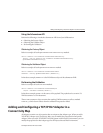
Note – The TCP/IP HL7 Adapter includes internal counters that keep track of all error
conditions.
General Functionality
This section explains the Adapter’s general functions and features. It includes the following
topics:
■
“Non-blocking I/O” on page 20
■
“HL7 Sequence Numbering Protocol” on page 20
■
“Failed Message Handling” on page 21
■
“Recourse Actions” on page 21
Non-blocking I/O
The non-blocking I/O feature prevents the Adapter from locking up when attempting to read or
write data blocks, allowing the Adapter to continue its operation in case of any communication
errors. If the read attempt fails for a congurable number of times, the Adapter exits or resets its
connection to the external system, depending on its conguration. In the event of a failed write,
the Adapter can resume its write operation to pick up where it previously left o until the entire
message is successfully sent.
Without this feature, the Adapter might lock up when a read or write failure occurs and be
unresponsive to all external messages, including requests from the user or the Enterprise
Monitor (for status).
HL7 Sequence Numbering Protocol
The Adapter can be congured to use HL7 sequence numbering. The negotiation and
incrementation of this number is automatically performed by the Adapter. For more details on
HL7 sequence numbering, refer to Appendix C (Lower Layer Protocols) of the HL7 Standard
for the HL7 version you are using.
When the Adapter is congured for HL7 sequence numbering, the sequence number le opens
when the Adapter starts up. If the sequence number le does not exist, one is created and
populated with a zero sequence number. The sequence number le is updated on the inbound
Adapter when the Adapter generates the HL7 ACK (this process is transparent to the user), and
when the outbound Adapter receives the HL7 ACK from the external system.
If you want to change the sequence number at runtime, you need to suspend the Adapter, edit
and save the sequence number le, and reactivate the Adapter. To force the Adapter to
resynchronize its sequence number with the external system, you need to suspend the Adapter,
edit the le so it contains a “-1”, and then reactivate the Adapter.
SunAdapterforTCP/IPHL7Overview
SunAdapterforTCP/IPHL7User's Guide • October200920



